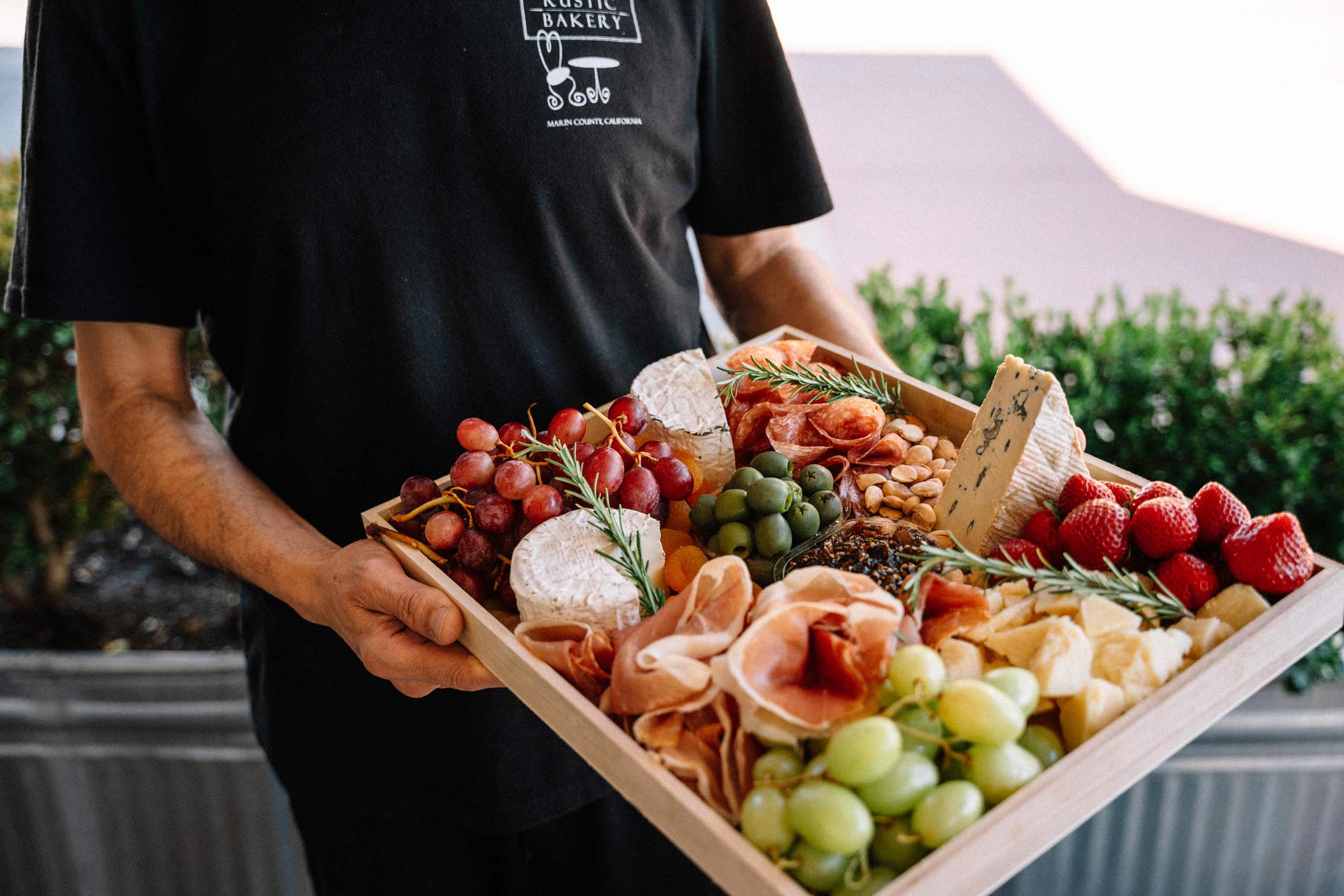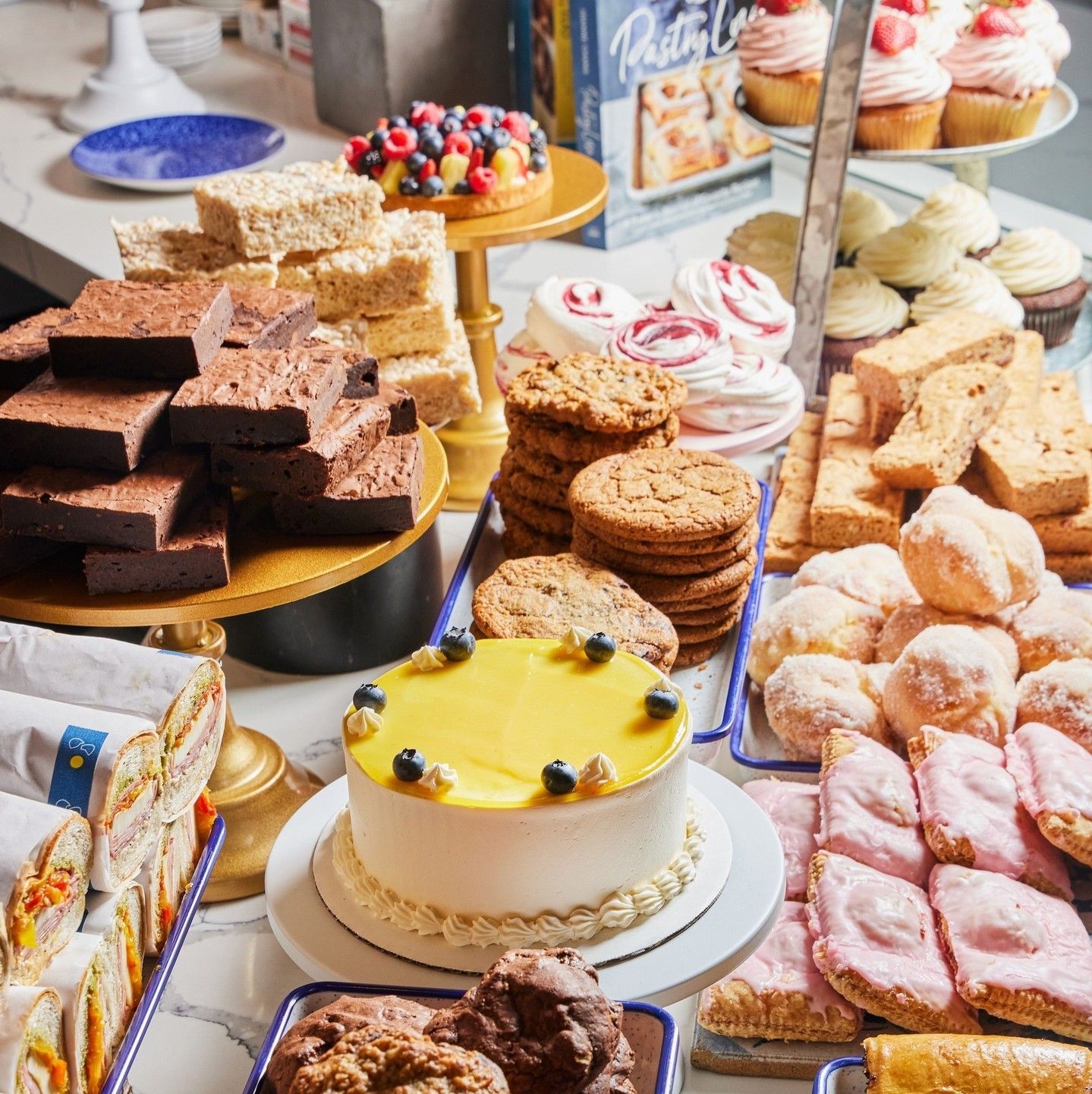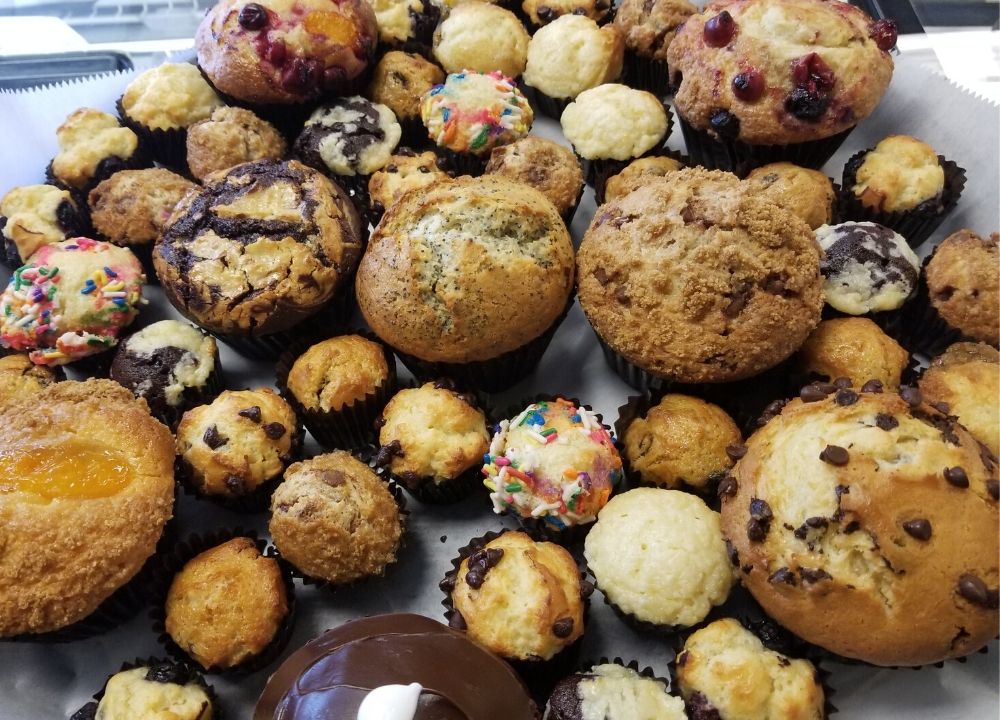Make Your Celebration Special with Birthday Catering Maddington
Make Your Celebration Special with Birthday Catering Maddington
Blog Article
Comprehending the Art of Pastry Shop Products: From Fresh Baked Breads to Irresistible Pastries and Finger Foods
From the science behind the ideal loaf of bread, where fermentation and gluten advancement play critical roles, to the finesse needed for developing split pastries, each aspect reveals a compelling story of workmanship. The adaptability of finger foods highlights just how taste and structure can be artfully combined to involve varied taste preferences.
The Science of Bread Making
At the heart of every loaf of bread exists a fascinating interaction of chemistry and biology. The procedure of bread making begins with the combination of flour, salt, yeast, and water-- each component playing a crucial function in the last product.
Yeast, a living microorganism, ferments the sugars present in the flour, creating co2 and alcohol while doing so. The co2 gas creates bubbles in the dough, creating it to climb and develop a light structure. The temperature level and humidity during fermentation significantly influence yeast activity and, consequently, the bread's taste and texture.

Mastering Bread Methods
Just how can one accomplish the fragile balance of appearance and flavor that specifies outstanding pastry? Understanding pastry strategies requires a deep understanding of active ingredients, methods, and the scientific research behind them. Fundamental to this craft is the option of premium ingredients-- flour, butter, sugar, and eggs-- each playing a crucial function in the end product's taste and structure.
The strategy of lamination, which includes folding layers of dough and butter, develops the desired flakiness in breads like croissants and puff bread. Precision in temperature level is important, as butter needs to stay cool to guarantee ideal layers. Correct blending techniques, such as the creaming strategy for cakes, make certain even consolidation of air and fat, resulting in a light and ventilated crumb.
Moreover, preserving the appropriate humidity levels during baking can significantly impact the end result, guaranteeing that breads climb appropriately and achieve that golden-brown surface. The art of pastry likewise demands persistence and technique; each effort boosts one's ability and understanding of the detailed balance required to create irresistible pastries that delight the detects. Proficiency in these techniques ultimately distinguishes a competent pastry cook from an amateur.
Kinds Of Finger Foods
The globe of culinary delights extends beyond pastries to incorporate a broad array of finger foods, which are commemorated for their ease and versatility. These bite-sized deals with are excellent for celebrations, supplying a variety of tastes and textures that accommodate diverse tastes buds.

On the sweeter side, miniature tarts and bite-sized cupcakes provide a wonderful coating browse around this site to any meal, attracting those with a wonderful tooth. Cheese and charcuterie boards offer as an innovative selection, permitting visitors to tailor their attacks with an assortment of meats, fruits, cheeses, and nuts.
Flavor Profiles in Baking
Baking is an elaborate dance of taste accounts that incorporates pleasant, mouthwatering, and umami notes to produce a harmonious experience for the taste buds. Comprehending these profiles is look at this now important for bakers seeking to boost their productions.
Sweet taste usually functions as the structure in baked products, with sugars, fruits, and natural sweeteners enhancing taste deepness. Components such as chocolate and caramel present intricate pleasant notes that can either control or match other flavors. Conversely, full-flavored aspects, typically discovered in pastries and breads, give equilibrium and contrast. Active ingredients like cheeses, seasonings, and natural herbs can change a basic dough into a complex flavor experience.
Umami, regularly neglected in cooking, plays a considerable role in improving flavors. Active ingredients such as aged cheeses, fermented products, and even certain nuts add to a tasty deepness that enhances general preference.
Additionally, the interplay of level of acidity from ingredients like buttermilk or citrus enthusiasm can brighten flavors, using a rejuvenating counterpoint to sweetness. By attentively incorporating these taste accounts, bakers can craft products that reverberate with varied tastes buds, developing an unforgettable culinary experience. Ultimately, understanding flavor profiles is essential to innovation on the planet of baking.
Essential Baking Equipments and Active Ingredients
Recognizing taste profiles in baking collections the phase for choosing the right tools and ingredients that facilitate the production of exceptional baked items. A trusted collection of baking pans-- such as sheet frying pans, loaf pans, and cake pans-- is critical for attaining preferred shapes and textures.
Flour serves as the foundation of most dishes; choosing the ideal type-- be it all-purpose, bread, or bread flour-- can significantly influence the outcome. Cooking powder and cooking soda are crucial for creating lift in cakes and breads.
Furthermore, including flavor boosters like vanilla remove, spices, and citrus passion can elevate your developments. By making certain access to these essential devices and ingredients, bakers can confidently start their cooking journey, crafting a diverse variety of fascinating baked goods.
Final Thought
Finally, the art of bakery products includes an extensive understanding of both innovative strategies and clinical concepts. Mastery in next bread making, pastry preparation, and finger food presentation exposes the complex partnerships in between ingredients and processes. Discovering varied taste profiles enhances the baking experience, while necessary devices and components supply the structure for success. Eventually, the charming world of baking thrives on the harmonious interaction of scientific research and creative thinking, causing a myriad of fascinating cooking developments.
How can one attain the delicate balance of appearance and flavor that defines exceptional bread? Essential to this craft is the selection of high-grade components-- flour, butter, sugar, and eggs-- each playing a vital role in the last product's taste and structure.

Understanding flavor profiles in baking sets the stage for selecting the right tools and components that assist in the production of phenomenal baked items. Exploring varied taste accounts improves the baking experience, while essential tools and ingredients provide the foundation for success.
Report this page